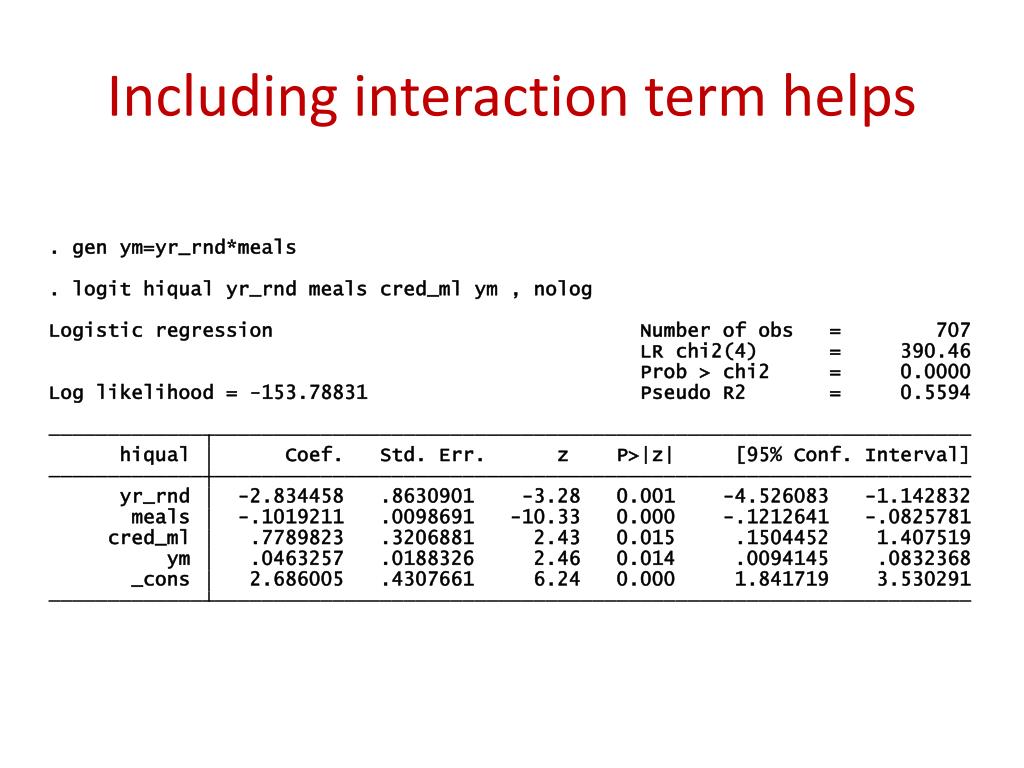
If you do not have independence of observations, it is likely you have "related groups", which means you might need to use a two-way repeated measures ANOVA instead of the two-way ANOVA.įortunately, you can check assumptions #4, #5 and #6 using Stata. For example, there must be different participants in each group with no participant being in more than one group. Assumption #3: You should have independence of observations, which means that there is no relationship between the observations in each group or between the groups themselves.Examples of categorical variables include gender (e.g., 2 groups: male and female), ethnicity (e.g., 3 groups: Caucasian, African American and Hispanic), profession (e.g., 5 groups: surgeon, doctor, nurse, dentist, therapist), and so forth. Assumption #2: Your two independent variables should each consist of two or more categorical, independent (unrelated) groups.If you are unsure whether your dependent variable is continuous (i.e., measured at the interval or ratio level), see our Types of Variable guide. Examples of such continuous variables include height (measured in feet and inches), temperature (measured in ☌), salary (measured in US dollars), revision time (measured in hours), intelligence (measured using IQ score), reaction time (measured in milliseconds), test performance (measured from 0 to 100), sales (measured in number of transactions per month), and so forth. Assumption #1: Your dependent variable should be measured at the continuous level.However, you should decide whether your study meets these assumptions before moving on. Since assumptions #1, #2 and #3 relate to your study design and choice of variables, they cannot be tested for using Stata. If any of these six assumptions are not met, you cannot analyze your data using a two-way ANOVA because you will not get a valid result. There are six "assumptions" that underpin the two-way ANOVA. However, before we introduce you to this procedure, you need to understand the different assumptions that your data must meet in order for a two-way ANOVA to give you a valid result.
INTERACTION TERM STATA 12 HOW TO
In this "quick start" guide, we show you how to carry out a two-way ANOVA using Stata, as well as interpret and report the results from this test. We come back to "simple main effects" later.

If you have a statistically significant interaction between your two independent variables on the dependent variable, you can follow up this result by determining whether there are any "simple main effects", and if there are, what these effects are (e.g., perhaps females with a university education had a greater interest in politics than males with a university education). Note: If you have three independent variables rather than two, you need a three-way ANOVA. Alternately, you could use a two-way ANOVA to understand whether there is an interaction between physical activity level and gender on blood cholesterol concentration in children (i.e., your dependent variable would be "blood cholesterol concentration", measured on a continuous scale in mmol/L, and your independent variables would be "physical activity level, which has three groups – "low", "moderate" and "high" – and "gender", which has two groups: "males" and "females").

The primary purpose of a two-way ANOVA is to understand if there is an interaction between the two independent variables on the dependent variable.įor example, you could use a two-way ANOVA to understand whether there is an interaction between educational level and degree type on salary (i.e., your dependent variable would be "salary", measured on a continuous scale using US dollars, and your independent variables would be "educational level", which has three groups – "undergraduate", "master's" and "PhD" – and "degree type", which has five groups: "business studies", "psychology", "biological sciences", "engineering" and "law"). The two-way ANOVA compares the mean differences between groups that have been split on two independent variables (called factors).


 0 kommentar(er)
0 kommentar(er)
